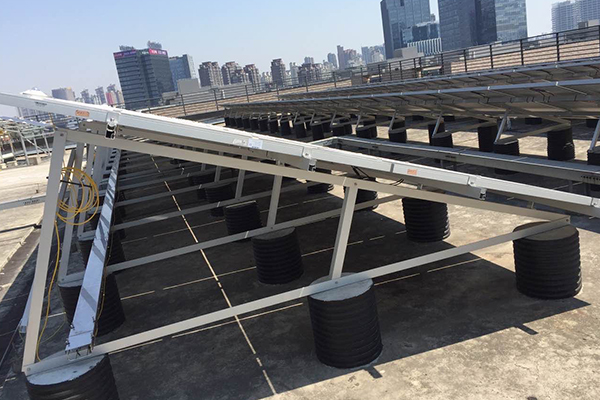As the world increasingly turns to renewable energy sources, solar power has emerged as a frontrunner. In – roof solar mounting systems are playing a pivotal role in making solar energy more accessible and efficient, especially for residential and commercial buildings.
Superior Aesthetics and Seamless Integration
One of the most significant advantages of in – roof solar mounting systems is their aesthetic appeal. Unlike traditional on – roof solar panel installations that can be visually obtrusive, in – roof systems blend seamlessly with the roof structure. For example, the tri – roof + system by TRITEC is designed to replace parts or entire roof coverings, such as tiles. This results in a sleek and uniform appearance, which is particularly appealing to homeowners and architects who prioritize the visual integrity of a building. By integrating the solar panels into the roof, these systems can enhance the overall design rather than detract from it.
Efficient Water Drainage Mechanisms
Proper water management is crucial for any roof, and in – roof solar mounting systems have innovative solutions. In the case of the tri – roof + system, the PV modules themselves drain most of the rainwater directly. The remaining water collects in specially developed water – bearing support profiles. These profiles are engineered to efficiently channel the water away, ensuring that the roof remains impermeable. This not only protects the roof from water damage but also safeguards the solar panels and the underlying structure. It’s a win – win situation that combines energy generation with effective roof protection.
Structural Integrity and Weather Resistance
In – roof solar mounting systems are built to last. All components of these systems are statically tested and optimized to withstand various weather conditions, including strong winds and heavy snow loads. For instance, they are ISO – certified, guaranteeing their structural integrity. This means that in extreme weather events, the solar – integrated roof will remain stable, continuing to generate clean energy. Whether it’s a blustery coastal area or a region prone to heavy snowfall, in – roof solar mounting systems can handle the challenges.
Simplified Installation Process
Installing in – roof solar mounting systems can be relatively straightforward. Take, for example, the tri – stand insertion profile used in some systems. It allows for simple, fast, and efficient installation of common framed solar modules. The modules are inserted into the aluminium profile and held in place by their own weight and friction, eliminating the need for separate screwing. The installation process typically involves attaching a substructure directly to the roof battens, mounting safe click elements, clicking in the insertion profiles, and finally inserting the modules. This streamlined process saves both time and labor costs during installation.
Cost – effectiveness in the Long Run
While the initial investment in an in – roof solar mounting system may seem significant, it offers long – term cost – effectiveness. By integrating solar panels into the roof, there is no need for additional on – roof mounting structures, reducing material costs. Moreover, the efficient energy generation capabilities of these systems mean that building owners can save on electricity bills over time. Additionally, the durability and low – maintenance requirements of in – roof solar mounting systems contribute to overall cost savings.
In – roof solar mounting systems represent a remarkable advancement in solar energy technology. They offer a combination of aesthetic appeal, efficient water management, structural stability, easy installation, and long – term cost – effectiveness. As the demand for clean and sustainable energy continues to grow, in – roof solar mounting systems are likely to become an increasingly popular choice for those looking to embrace solar power.

